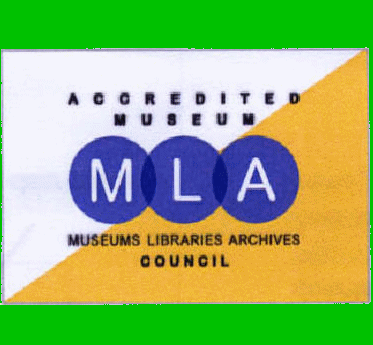What’s On at The Met
10th Feb at 19:30 The Carpenters Experience £22
11th Feb at 10:30 YouTube Workshop £8
21st Feb at 19:30 Night of Choirs £8
22nd Feb at 14:00 Comedy Club 4 Kids £7
25th Feb at 13:00 & 15:30 Family Disco £4
For more information Click Here or tel 01495 533195
Museum opening times
The Museum is open to the public, free of charge:
Thursday* to Saturday 10am – 1pm
January 100 Club
This month’s prize numbers were drawn by member Margaret Cook and her son-in-law Chris Staples and the lucky winners are:-
No. 42 Peggy Bearcroft £20
No. 25 Margaret Phillips £10
If you would like to join our 100 club and be in with a chance of winning, it costs just £1 a month. Ask at the museum for further details.
Annual Membership Reminder
If you haven’t yet done so, please pop in and renew your annual membership. We rely on your support to stay open and the fee is just £6 for standard membership and £25 for Vice Presidents. If you are a taxpayer and haven’t already done so, please come in and sign a Gift Aid declaration so that we can claim another 25p for each pound given at no extra cost to you. And of course when you become a member you will receive our Loyalty card to receive a free hot drink in our café every month. This year too we are offering a junior membership to under 16s for just £3 a year to include a free welcome gift.
Café Prices
With effect from 1st February, there will be a small increase in some of our café items. We regret having to raise our prices but with rising costs we have little choice. Rest assured though our prices still give excellent value for money.
Half Term Family Fun

Pikachu and his friends will be back at the museum during the February half term. Can you find where they’re hiding? Find them all and claim your prize! Starts Saturday 18th February 50p per child.
M4 Motorway
In recent years we have all found ourselves at some point travelling along the M4 whether it be for a trip to the airport, visiting family, going over the river Severn to Bristol or just a shopping trip to Cardiff... but how much do we actually know about it?
Can any of us remember the route into England before it was built? It took you over hills and bends plus many traffic jams as cars and travel got more popular. It mostly runs parallel to A4 and later A48 from west London to south west Wales a whole 189 miles or 304km. It started in Berkshire in 1959 with the Maidenhead bypass and then the Slough bypass before the Chiswick flyover was completed and then the rest of the road followed causing major destruction as it ploughed through many counties to the Welsh border of the River Severn. The 139 miles of motorway greatly accelerated movement of people and goods between England and Wales also giving much needed jobs to men returning from conflicts in Europe, Asia and Africa.
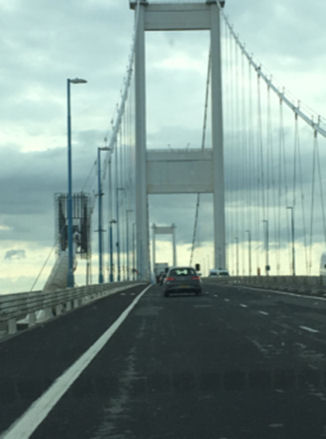 The building of the Severn Bridge in the 1960’s replacing the ferry service, consists of 4 separate structures – Aust Viaduct, Severn Bridge, Beachley Viaduct and Wye Bridge and for 30 years carried the M4 from England to Wales until the opening of the second Severn crossing in 1996, when it was then given M48 status.
The building of the Severn Bridge in the 1960’s replacing the ferry service, consists of 4 separate structures – Aust Viaduct, Severn Bridge, Beachley Viaduct and Wye Bridge and for 30 years carried the M4 from England to Wales until the opening of the second Severn crossing in 1996, when it was then given M48 status.
The Welsh part of the M4 was originally granted £150 million for building and took over 30 years to be completed in sections and now terminates at Pont Abraham in Carmarthenshire being completed in 1993.
A few special features of the M4 include:-
- No junction 31 joining A469 at Thornhill due to local opposition and lack of government funding!
- It has 2 of only 3 four level interchanges on UK motorways – 4B & 20
- The only junction in Britain with two numbers – 8/9 near Maidenhead - due to a mix up when building/numbering in sections.
Karen Pratley
Newport’s Medieval Ship
In 2002, while excavations were underway to build the Riverfront Arts Centre in the centre of Newport, a medieval ship was found on the west bank of the River Usk. It is thought to have been lying there since around 1469 making it 100 years older than the flagship of Henry VIII, the Mary Rose, which sank in 1582.
It is thought that the 100ft (30m) boat weighing around 500 tons had travelled from the Iberian peninsula to Bristol carrying wine and then was moved to an inlet at Newport on the banks of the River Usk for a refit when disaster struck. It is thought its moorings broke and it rolled on to its side. Much of it was salvaged but what couldn’t be was left where it lay and there it remained for over 500 years.
It’s taken 20 years of painstaking restoration and has cost millions of pounds but it’s now ready for the start of the assembly stage. It will be the only 15th century ship on display anywhere in the world and the search is on to find a suitable location. It was hoped that it would be displayed in the basement of the Riverfront Arts Centre where it was found however that has now been ruled out and the hunt is on for an alternative place within Newport with a certain empty department store among the places being considered. It is hoped the ship will attract tourists to Newport from all over the world and be a welcome boost for the Welsh economy.
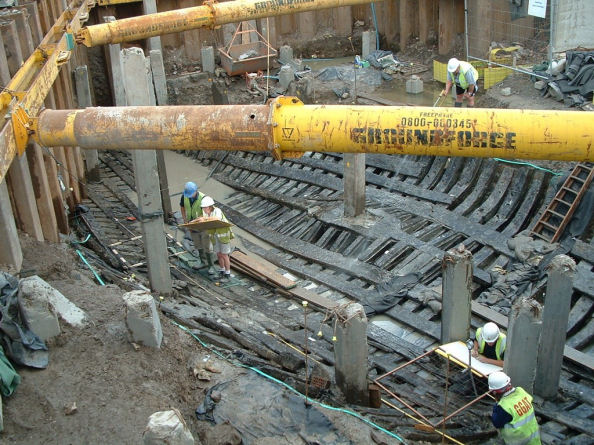
By Owain at the English-language Wikipedia, CC BY-SA 3.0,
Sources:
BBC
Wikipedia
Love and Romance
With Valentines’ Day falling in February, our minds often turn to love and romance. In western culture, particularly, romantic love is everywhere. Think of books such as Jane Eyre, shows such as West Side Story, or films such as my personal favourite, Brief Encounter. Then there are poems, adverts, magazines, dating sites and lonely hearts columns in newspapers. Think too of how we celebrate weddings and anniversaries – we want to proclaim our love to the world! And when things don't work out we refer to hearts being broken – romantic language for something very painful to experience.
Many of us choose to wear engagement and wedding rings or a ring which signifies commitment to a loved one. How did that start? Well I'm sure I've read that rings of one sort or another were exchanged thousands of years ago but the practice in Europe is believed to have become popular in the 13th century. Rings were commonly used to signify mutual love and obedience or a business contract but Christians got into the habit when Pope Innocent III declared a mandatory waiting time between betrothal and marriage – presumably to avoid hasty and unwise decisions. I wonder how many couples changed their minds during that period of waiting when they got to know their potential partner a little better? Of course the next step had to be diamonds; buying a sparkler for your sweetheart is something we are very familiar with now, but it seems the first person to give his bride-to-be a diamond ring was Archduke Maximilian of Austria back in 1477. Not just diamonds of course, those special rings can be set with any jewel or pearls but sapphire is a close second choice and is apparently traditionally associated with fidelity. As for why wedding rings are worn on the fourth finger of left hand, that also goes back to the Egyptians who believed that a vein in that finger ran directly to the heart; the 'vena amoris'. Total rubbish of course but it made a good story and the custom persists.
There are even patron saints of love. We are most familiar with St Valentine who was a third century Roman saint associated with a tradition of courtly love. He is said to have suffered martyrdom for his efforts in allowing Christian couples to marry at a time when Christians were persecuted. Although the date of 14th February is believed to have been chosen to commemorate the anniversary of Valentine's death, it may also have been chosen to coincide with the Roman fertility festival of Lupercalia celebrated on 15th February. Whatever the origin, St Valentine’s day is when we traditionally send a soppy card to our sweetheart, or anonymously to a hoped-for sweetheart.
 If you want a mythical figure with a bit more passion, there is always Cupid whose very name in latin (Cupido) means 'passionate desire'. The son of Mars and Venus, Cupid (or Eros) is the god of desire, erotic love, attraction and affection and is traditionally depicted with a bow and arrow ready to shoot his dart and send love on its way. His mother too we associate with love and desire – Venus was a much venerated goddess of Roman times and a popular subject with artists.
If you want a mythical figure with a bit more passion, there is always Cupid whose very name in latin (Cupido) means 'passionate desire'. The son of Mars and Venus, Cupid (or Eros) is the god of desire, erotic love, attraction and affection and is traditionally depicted with a bow and arrow ready to shoot his dart and send love on its way. His mother too we associate with love and desire – Venus was a much venerated goddess of Roman times and a popular subject with artists.
In Welsh speaking parts of Wales romantic love is celebrated on 25th January; St Dwynwen's Day. Dwynwen, the Welsh patron saint of lovers, was a 5th century princess whose tragic experience of love led her to dedicate her life to god and lovers. Dwynwen was said to be the prettiest daughter of King Brychan and she fell in love with a prince called Maelon Dafodrill. Her father had already arranged a marriage for her and refused permission for her to marry Maelon. She prayed to God for help and an angel appeared who gave her a potion to drink. The potion was intended to help her forget her love for Maelon but when she drank it Maelon was turned into a block of ice! Whether it was because Dwynwen agreed to drink the potion in the first place, or her desperate prayers on seeing her beloved Maelon turned to ice, God granted her three wishes. The first was for Maelon to be thawed. The second was to ask God to help all true lovers. The third was that she would never marry.. Dwynwen was grateful that her wishes were granted and spent the rest of her life as a nun at a convent in an isolated part of Anglesey. We don't seem to know what happened to Maelon but this certainly wasn't a happy-ever-after story for either of them.
Jen Price
SNOW
I think most of us have a love/hate relationship with snow. We love the way it makes everything look white and magical and who can't smile at the joy on children's faces when they see and play with it. But then if there is too much of it, as in the photo below of Gelli Crug Road in the mid 1970s, life becomes difficult and that pretty snow looks pretty ugly when it starts to melt and that pristine white snow blanket turns to brown slush.
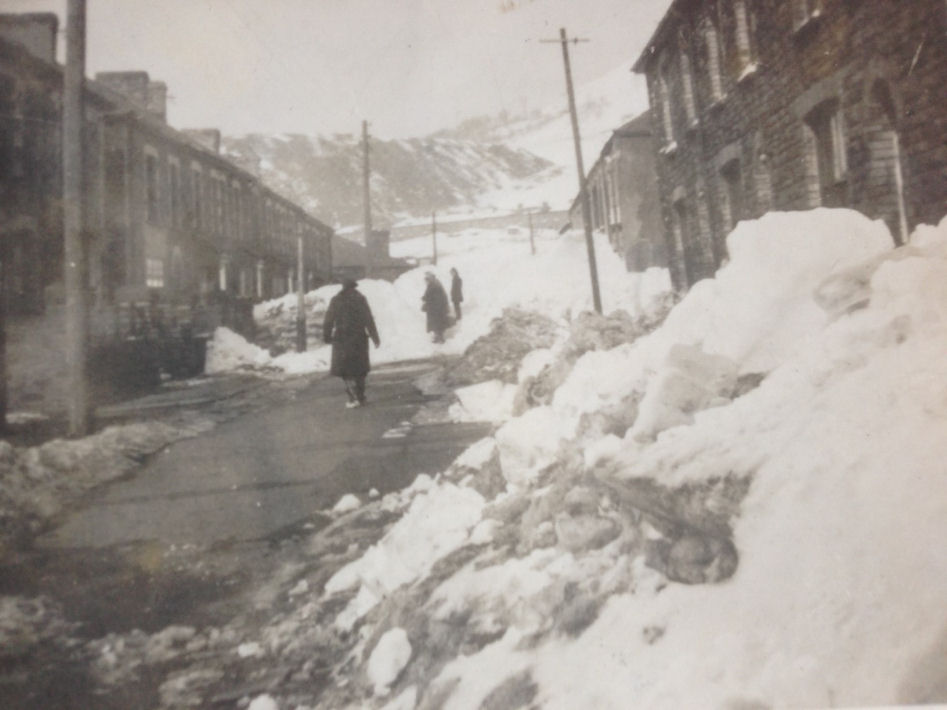
I'm going to show my age now when I say that 'in my day we just used to get on with it'. It's true though. Nowadays schools are often shut if it snows but there are practical reasons as well as 'health and safety ' being trotted out with worries about children falling in the playground. Back in the 1950s and 1960s schools were much smaller, most of the pupils lived within walking distance (albeit further than many youngsters would want to walk today) and the teachers also, in the main, lived in the town. That meant that you were all expected to get to school even if it was snowing. I recall that those children who had buses to catch were allowed to leave early in case the buses stopped running but for the rest of us it was school as normal. This was in the days before girls were allowed to wear trousers to school and it was pre-tights days. I still remember getting 'spreathe' behind my knees during the cold wet or snowy winters. Mind you, I never experienced snow like the great freeze of 1946-47 about which most of have heard with stories of people leaving their houses via their bedroom windows, bodies unable to be buried, transport at a complete standstill. Can you imagine that scenario playing out now?
I'm going to go back to the beauty of snow as the child inside me always looks forward to a bit of snow. I was with my walking club in North Wales in early December and we all experienced our first snow of the winter. It was lovely to walk in the hills in snow (not too much of it to be a danger) and when, even more childlike, a few of us went on the Corris Santa Special steam train, well the snow made it feel very Christmassy. And I'm sure we have all sometimes been able to see individual snow crystals, albeit fleetingly. As with rain, each snowflake gathers around a minute piece of dust or other minute particle. I have learnt that the pattern of a snowflake is determined by the temperature and humidity present when it is formed and although laboratory experiments have produced near-identical snowflakes, exactly identical snowflakes have yet to be found in 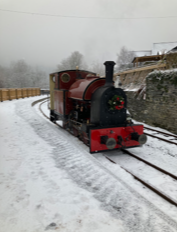 nature. An American named Alwyn Wilson Bentley (1865-1931) set himself the task of looking closely at snowflakes and he photographed 5000 of of them using microphotography techniques he pioneered – an assemblage of images that remains impressive today and which laid the foundations for the classification of snowflakes. This was a man dedicated to his passion; he would stand in the snow for hours on end in an attempt to catch a single snowflake and he used a feather to transfer it to a plate ready to be photographed. All this was necessarily done outside and one can only imagine that many of his specimens must have melted in the 90 second period needed to capture the image under the lens.
nature. An American named Alwyn Wilson Bentley (1865-1931) set himself the task of looking closely at snowflakes and he photographed 5000 of of them using microphotography techniques he pioneered – an assemblage of images that remains impressive today and which laid the foundations for the classification of snowflakes. This was a man dedicated to his passion; he would stand in the snow for hours on end in an attempt to catch a single snowflake and he used a feather to transfer it to a plate ready to be photographed. All this was necessarily done outside and one can only imagine that many of his specimens must have melted in the 90 second period needed to capture the image under the lens.
As I write this I can see from the weather forecast that there is a possibility of a snow shower in the week ahead. I'll keep my fingers crossed and meanwhile will leave you with a photo of the snow experienced on my Corris trip.
Jen Price
Top Of Page
© Abertillery & District Museum 2023 